Studio Visit
In the Sicilian Countryside, Lola Montes Schnabel Creates Luminous Ceramics Out of Volcanic Clay
Her new show, “Cirica,” at her brother Vito Schnabel's New York gallery, is on view through January 20, 2024.
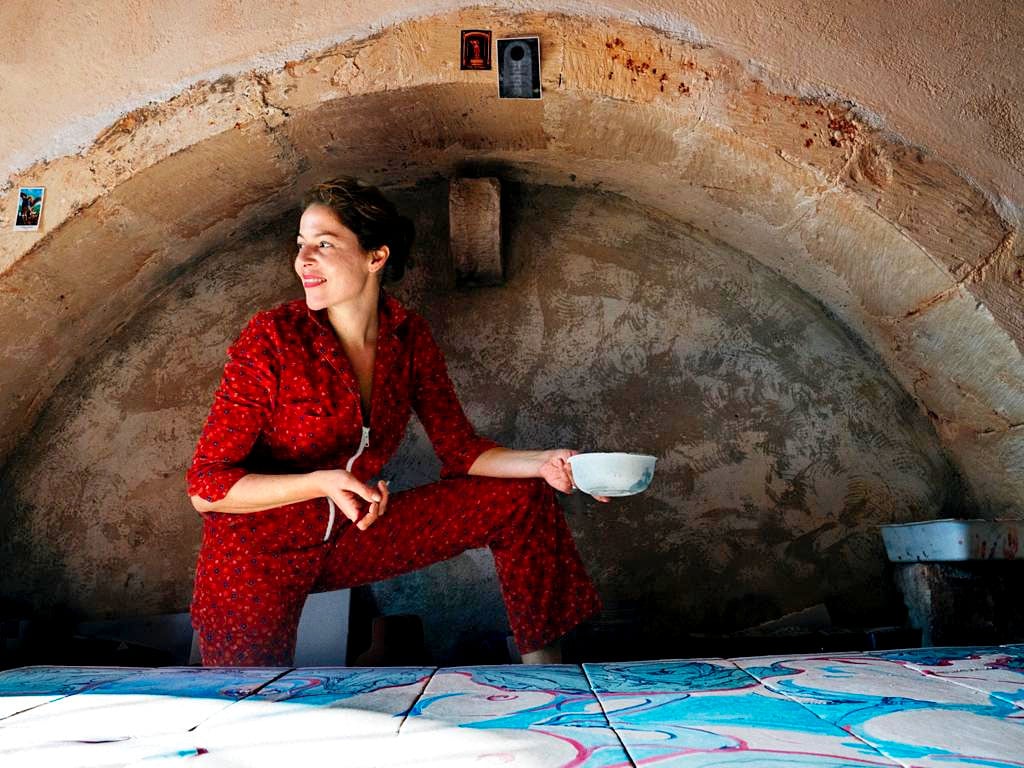
Her new show, “Cirica,” at her brother Vito Schnabel's New York gallery, is on view through January 20, 2024.

Katie White

Walking through “Cirica,” an exhibition of new ceramic-based paintings and sculptures by the artist Lola Montes Schnabel, at New York’s Vito Schnabel Gallery, second glances reveal a rich and referential world of meaning hiding just below the surface of her creations. In one sculpture, at a certain angle, a winged woman, faceless, like the Victory of Samothrace, appears. In a wall sculpture, glazed in yellows and reds and blue, Piet Mondrian’s Modernist compositions appear. In others, the work of Lucio Fontana. Mythical and literary stories surface alongside—and the mind conjures up scenes of gods feasting on grapes or artichokes or warriors battling in tangled scenes.
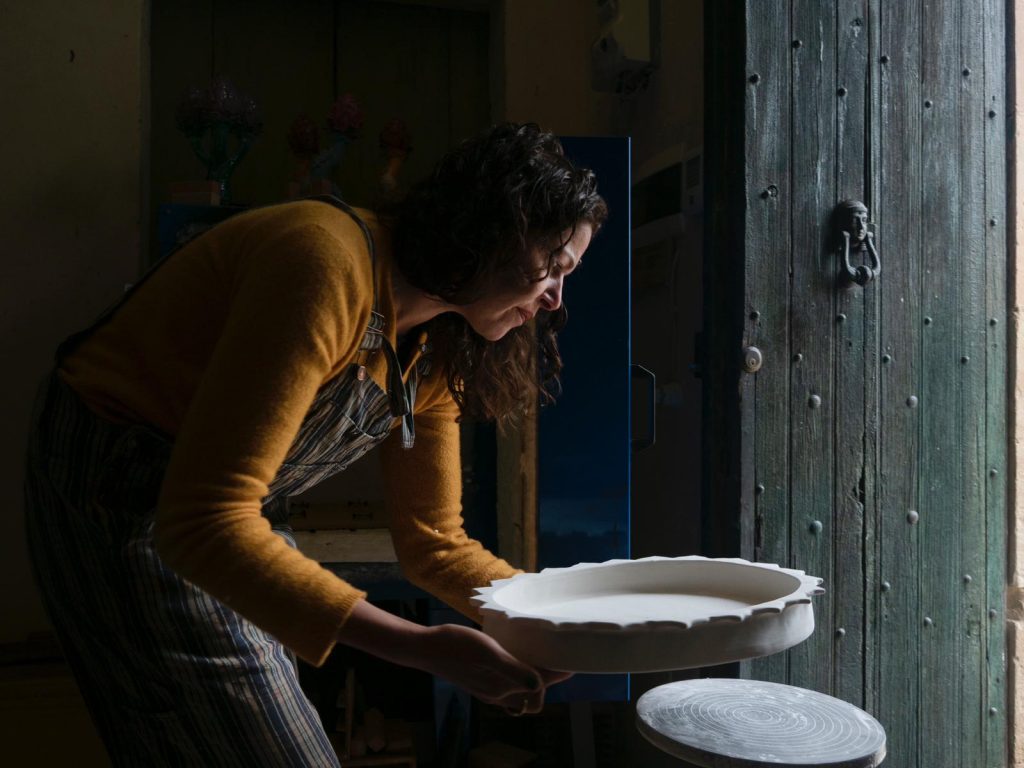
©️ Lola Montes; Photo by Alessandro Sala / Cesura; Courtesy the artist and Vito Schnabel Gallery.
Montes, who is the sister of dealer Vito Schnabel, has been making such satisfyingly layered works for two decades, often embracing cross-medium experimentation. Here, in “Cirica” (on view through January 20, 2024) she is now revealing works made in collaboration with local artisans in Sicily, where she has lived since 2018. Drawing on Sicily’s incredible history marked by conquest, legend, and landscape, Montes merges the past and the present, pulling a decadent and delightful ancient world into the present moment.
The exhibition title is a reference to the Cirica peninsula—a place where fishermen are known to gather fragments of Roman and Greek ceramics that surface from the sea. In mythology, Cirica is the home of Circe, the temptress who ensnared Ulysses in Homer’s Odyssey, a powerful and transformative force.
Recently, we visited Montes as she was installing the show at the gallery and talked about how Sicily has changed her practice and how she allows herself to be a vehicle for inspiration.
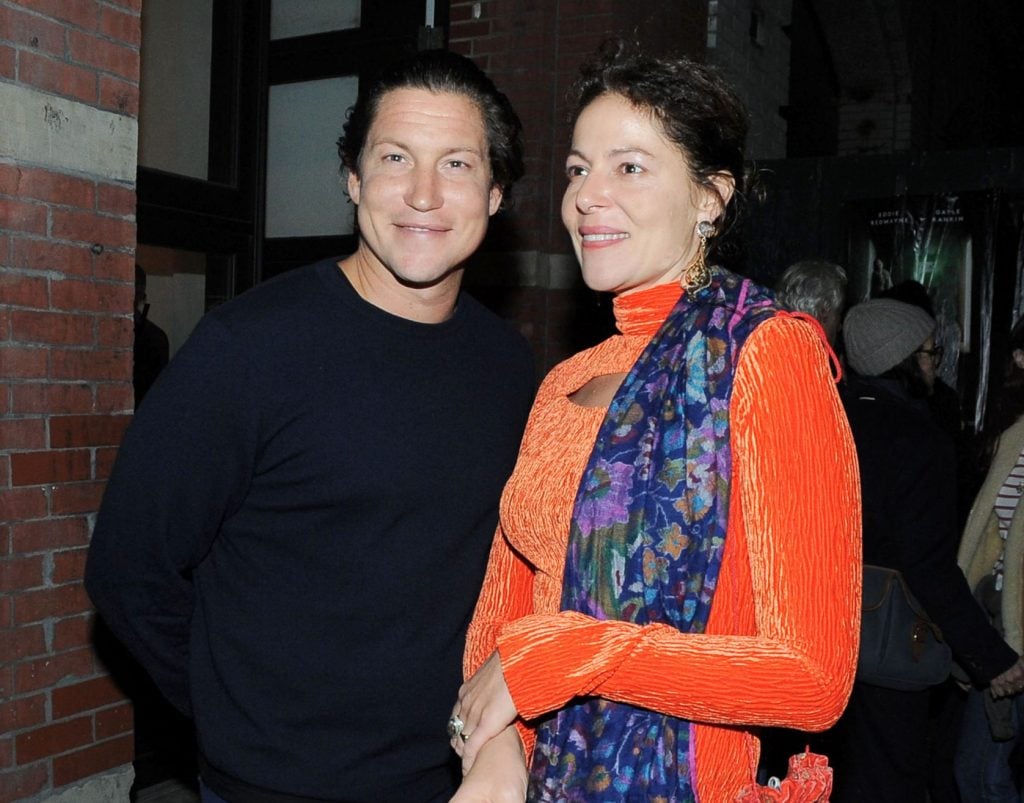
Vito Schnabel and Lola Montes Schnabel at the opening of “Ciricia” at Vito Schnabel Gallery, New York, NY. ©Patrick McMullan. Photo by Paul Bruinooge/PMC.
You’ve been working in Sicily for the past several years. What’s it like to see your work in a different setting?
It’s really strange for me. In Sicily, I work in a garden full of trees filled with birds and dogs and complete silence. I live about five minutes from the sea. It was just olive oil season. You see all these farmers picking their olives. That’s all that’s there. There’s not even a landline, though I do have wifi. There’s no sound pollution whatsoever. It’s very magical. I need that space to concentrate and channel whatever’s going on everywhere on a psychic level. It’s very different than New York.

Installation images “Lola Montes Schnabel: Cirica” 2023. Courtesy of Vito Schnabel Gallery.
How long have you been in Sicily and how has it changed your work?
I’ve been there for five years. Now, I just think. I don’t have to drive to Mana Contemporary in New Jersey or get over to Mott Street where I had a studio for a long time. I used to go to the studio at 8 p.m. and then stay all night because it’s quiet. In Sicily, I can go inside of myself without any distractions. I am easily the queen of distraction. I will talk to any stranger on the street. Sicily changed my work because I edited a lot out…edited my family out. I edited out my friends, I edited out any kind of theater or movie or dinner.
Why did you decide to move?
I fell in love with a photographer. He’s a journalist and also makes art. He lives there. I had rented a house for two summers as well. I had Lyme disease and was trying natural cures for clearing it out, one includes drinking unpasteurized goat or sheep milk which I found I could get in Sardinia or Sicily. During that time, I learned to appreciate the landscape. There are all these pastel colors in the sunset every day—a purple haze or periwinkle color that comes out. Sicily has four springs. In the summer when it’s hot, everything turns into a tiger belly. But in November you’ve got fields of irises, and then all through winter it’s amazingly colorful. Clover is going over everything and poppies. Now I understand why the Impressionists painted lily pads. These colors, when you’re driving around, really get in your head.
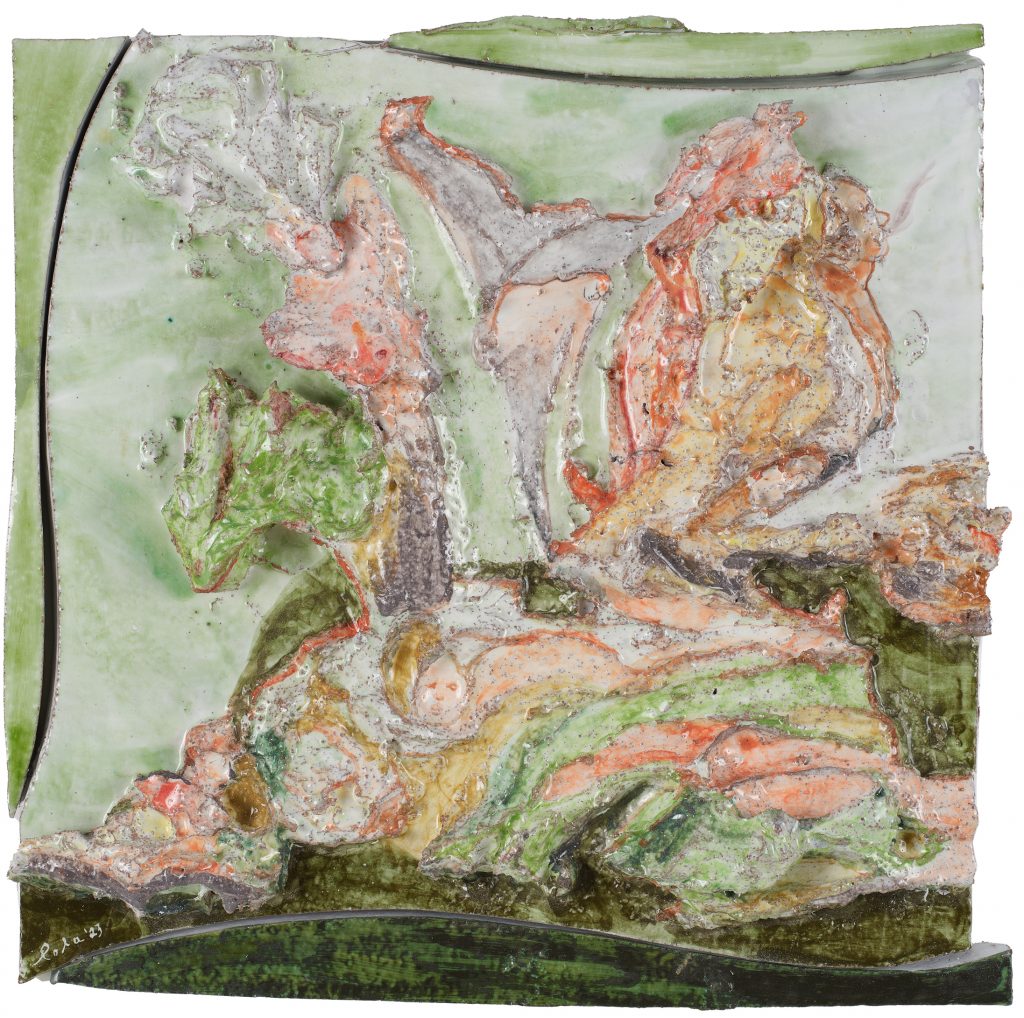
Lola Montes, Crocodile Tears (2023) © Lola Montes; Photo by Argenis Apolinario; Courtesy the artist and Vito Schnabel Gallery.
Right now, you’re installing this new show at the gallery, and it’s all painted ceramics. Can you tell me about your process and your materials?
All of these works are made from clay that comes from near Mount Etna, which is very different than buying clay in, let’s say, Sienna. This material is charged with mineral volcanic rock and when you cook it at certain temperatures, this violet glow comes from within it that looks almost like seashells. And there’s a lot of alchemy that takes place in ceramics. I’ve been making my opaque glazes and just experimenting the same way you would mix colors with oil paint. I can’t ever achieve that color again unless I write down exactly the amount in the little book, which I do—one spoonful of this or that. One of the reasons I moved to Sicily too was that I had space to make sculptures and huge paintings and work outside. My immune system wasn’t working well, and I didn’t want to paint with a gas mask and gloves on. I need to touch my work. So this way I can work outdoors and all of these powders that are filled with heavy metals and glass don’t go on my face. I work barefoot and can have my dogs and have been able to have a ceramic studio and a painting studio.
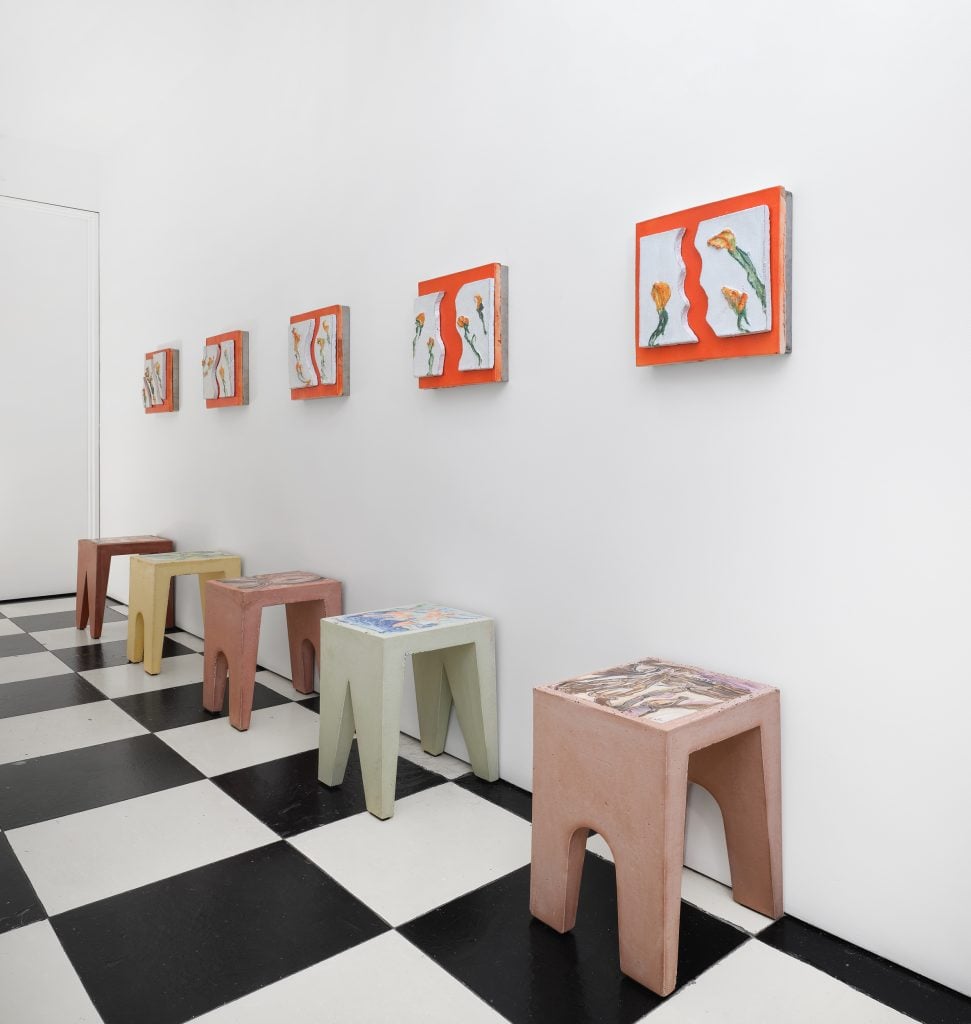
Installation images “Lola Montes Schnabel: Cirica” 2023. Courtesy of Vito Schnabel Gallery.
How did you start making ceramics?
It’s a thread in my practice to work with artisans in different places. I made silver masks in Mexico. When I went to India, I used pigments there. I like going to a place and seeing the tradition of that place and then bringing fine art into that tradition. Catania is the ceramic capital of Sicily and there’s a tradition at Santo Stefano di Camastra where they make these Moor’s Head planters. I went there and I sat there and watched the way they do things and learned so that I’d be able to create a studio in my own house. I’d ask them to try things that they’re uncomfortable with, and make unusual faces on the work, not what they think tourists want. The faces of Sicily, because they were conquered by so many people, have Arabic characteristics, or they have, you know, the French, the Spanish, the Greeks. So many people went through this land and wanted it. I also go to a tile foundry that’s outside of Catania, where they’ve been very nice to me. They’ve been hand-making terracotta tiles for a hundred years. One of the brothers allows me to go there and throw a bunch of clay around, make a huge mess, then wait two months for my pieces to dry, cook them, and then bring them to me. Within those pieces, I see what I should draw. The piece illustrates itself because I see these shapes and the drawing tells me what’s inside of it. I like that there’s a mysterious element of surprise when putting it in the oven. It’s a beautiful feeling. It’s like something’s being born.
Tell me about the imagery you’re working with—I see trees, mythical figures, artichokes.
I was recently explaining to my sister that I’m not the author, I’m just a vehicle to come through. But once the work is made everyone’s involved in presenting it, making it conscious to the world. I’m happy that art can do that because often things come true when you work from your imagination—the whole thing reveals itself later. In the same way, the clay reveals itself to me, the narratives reveal themselves later. Some of these might be scenes of violence, or psychic destruction. In another work, there’s a tree that reminds me of a temple I visited in India when I was 19. A man was living there who lived on a spoonful of butter a day. He started speaking to me and even though I couldn’t understand him, I did understand what he was saying. That work encapsulates that experience, which taught me about just how nature teaches us everything. In another work, I see the Victory of Samothrace. Other works are from books—one, with two faces, is from the cover of a book from the childhood school library. The images all flood together. What’s important to me is to work with a solid material and try to make it feel like water—since in the process itself we already have fire and earth.
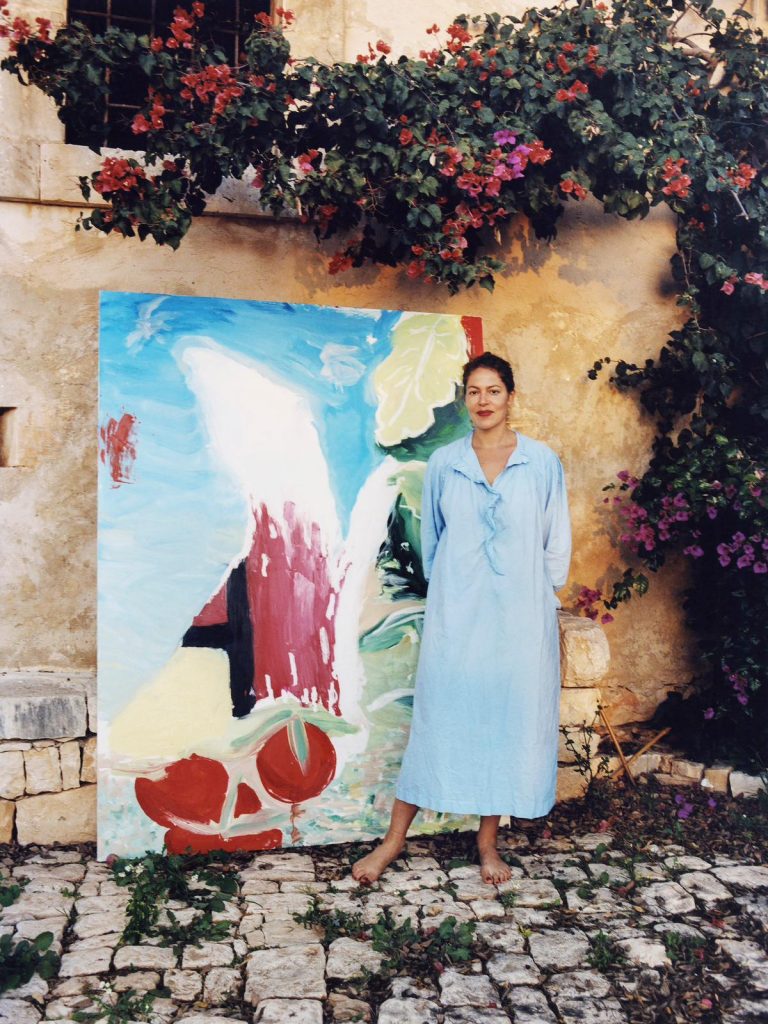
©️ Lola Montes; Photograph by Jonathan Frantini.; Courtesy of the artist and Vito Schnabel Gallery.
More Trending Stories:
Art Dealers Christina and Emmanuel Di Donna on Their Special Holiday Rituals
Stefanie Heinze Paints Richly Ambiguous Worlds. Collectors Are Obsessed
Inspector Schachter Uncovers Allegations Regarding the Latest Art World Scandal—And It’s a Doozy
Archaeologists Call Foul on the Purported Discovery of a 27,000-Year-Old Pyramid
The Sprawling Legal Dispute Between Yves Bouvier and Dmitry Rybolovlev Is Finally Over